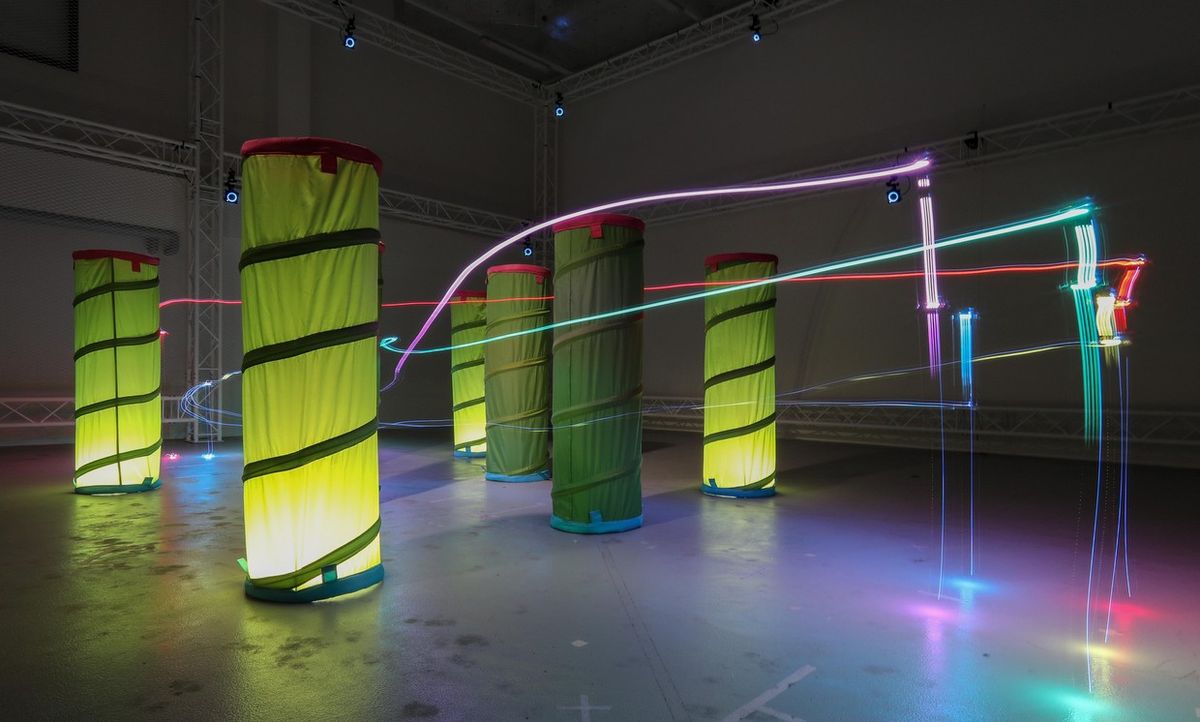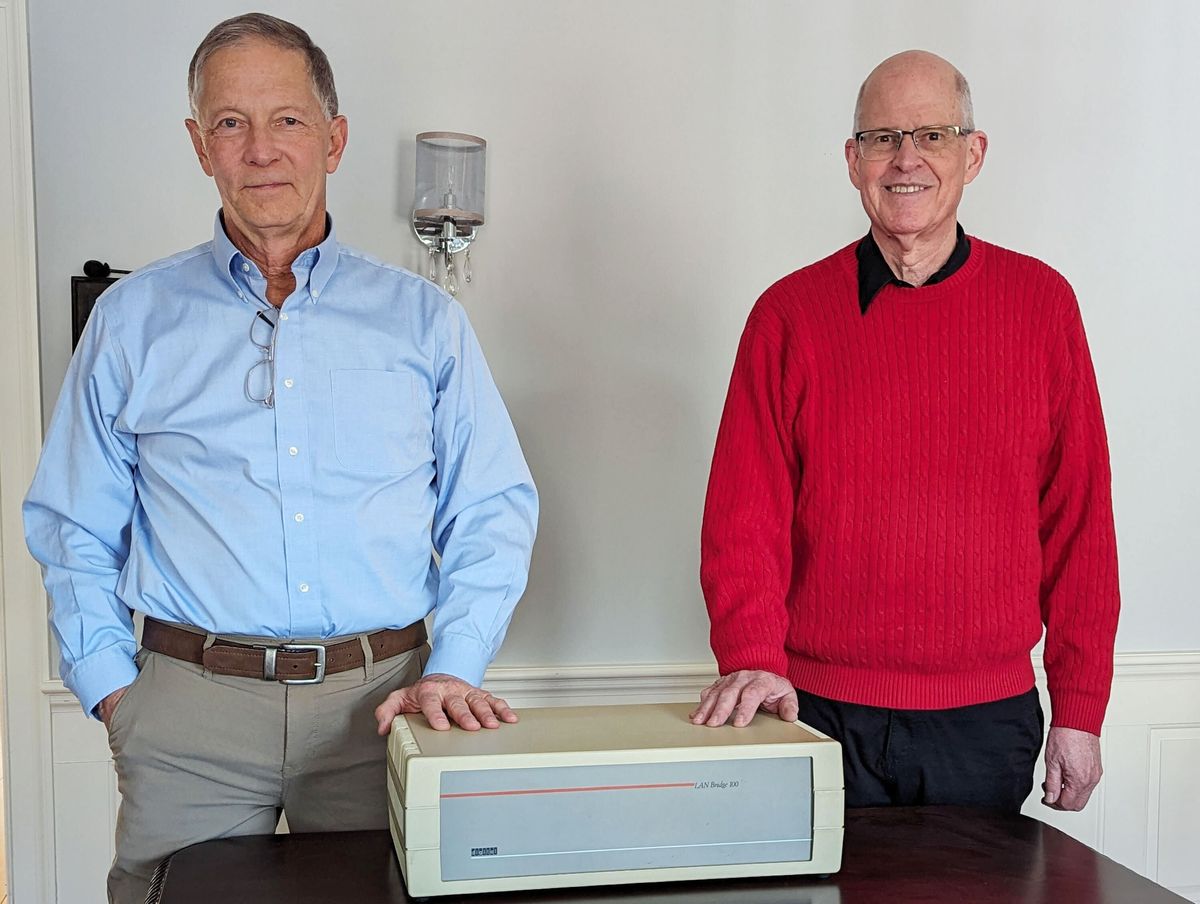Video Friday is your weekly selection of awesome robotics videos, collected by your Automaton bloggers. We’ll also be posting a weekly calendar of upcoming robotics events for the next few months; here's what we have so far (send us your events!):
ICRA 2021 – May 30-5, 2021 – [Online Event]
RoboCup 2021 – June 22-28, 2021 – [Online Event]
RSS 2021 – July 12-16, 2021 – [Online Event]
DARPA SubT Finals – September 21-23, 2021 – Louisville, KY, USA
WeRobot 2021 – September 23-25, 2021 – Coral Gables, FL, USA
IROS 2021 – September 27-1, 2021 – [Online Event]
ROSCon 20201 – October 21-23, 2021 – New Orleans, LA, USA
Let us know if you have suggestions for next week, and enjoy today's videos.
Drones in swarms (especially large swarms) generally rely on a centralized controller to keep them organized and from crashing into each other. But as swarms get larger and do more stuff, that's something that you can't always rely on, so folks at EPFL are working on a localized inter-drone communication system that can accomplish the same thing.
Predictive control of aerial swarms in cluttered environments, by Enrica Soria, Fabrizio Schiano and Dario Floreano from EPFL, is published this week in Nature.
[ EPFL ]
It takes a talented team of brilliant people to build Roxo, the first FedEx autonomous delivery robot. Watch this video to meet a few of the faces behind the bot–at FedEx Office and at DEKA Research.
Hey has anyone else noticed that the space between the E and the X in the FedEx logo looks kinda like an arrow?
[ FedEx ]
Thanks Fan!
Lingkang Zhang’s latest quadruped, ChiTu, runs ROS on a Raspberrypi 4B. Despite its mostly 3D printed-ness and low-cost servos, it looks to be quite capable.
[ Lingkang Zhang ]
Thanks Lingkang!
Wolfgang-OP is an open-source humanoid platform designed for RoboCup, which means it's very good at falling over and not exploding.
[ Hamburg Bit-Bots ]
Thanks Fan!
NASA’s Perseverance rover has been on the surface of Mars since February of 2021, joining NASA’s Curiosity rover, which has been studying the Red Planet since 2012. Perseverance is now beginning to ramp up its science mission on Mars while preparing to collect samples that will be returned to Earth on a future mission. Curiosity is ready to explore some new Martian terrain. This video provides a mission update from Perseverance Surface Mission Manager Jessica Samuels and Curiosity Deputy Project Scientist Abigail Fraeman.
[ NASA ]
It seems kinda crazy to me that this is the best solution for this problem, but I’m glad it works.
[ JHU LCSR ]
At USC’s Center for Advanced Manufacturing, we have developed a spray painting robot which we used to paint an USC themed Tommy Trojan mural.
[ USC ]
ABB Robotics is driving automation in the construction industry with new robotic automation solutions to address key challenges, including the need for more affordable and environmentally friendly housing and to reduce the environmental impact of construction, amidst a labor and skills shortage.
[ ABB ]
World’s first! Get to know our new avocado packing robot, the Speedpacker, which we have developed in conjunction with the machinery maker Selo. With this innovative robot, we pack avocados ergonomically and efficiently to be an even better partner for our customers and growers.
[ Nature's Pride ]
KUKA robots with high payload capacities were used for medical technology applications for the first time at the turn of the millennium. To this day, robots with payload capacities of up to 500 kilograms are a mainstay of medical robotics.
[ Kuka ]
We present a differential inverse kinematics control framework for task-space trajectory tracking, force regulation, obstacle and singularity avoidance, and pushing an object toward a goal location, with limited sensing and knowledge of the environment.
Should robots in the real world trust models? I wouldn't!
[ Science Robotics ]
Mark Muhn works together with the US FES CYBATHLON team Cleveland since 2012. For FES cycling he uses surgically implanted, intramuscular electrodes. In the CYBATHLON 2016 and 2020, Mark cycled on the first and the third place, respectively. At the past International IEEE EMBS Conference on Neural Engineering (NER21), he described the importance of user-centered design.
[ Cybathlon ]
This just-posted TEDx talk entitled “Towards the robots of science fiction” from Caltech's Aaron Aames was recorded back in 2019, which I mention only to alleviate any anxiety you might feel seeing so many people maskless indoors.
I don’t know exactly what Aaron was doing at 3:00, but I feel like we’ve all been there with one robot or another.
[ AMBER Lab ]
Are you ready for your close-up? Our newest space-exploring cameras are bringing the universe into an even sharper focus. Imaging experts on our Mars rovers teams will discuss how we get images from millions of miles away to your screens.
[ JPL ]
Some of the world's top universities have entered the DARPA Subterranean Challenge, developing technologies to map, navigate, and search underground environments. Led by CMU's Robotics Institute faculty members Sebastian Scherer and Matt Travers, as well as OSU's Geoff Hollinger, Team Explorer has earned first and second place positions in the first two rounds of competition. They look forward to this third and final year of the challenge, with the competition featuring all the subdomains of tunnel systems, urban underground, and cave networks. Sebastian, Matt, and Geoff discuss and demo some of the exciting technologies under development.
[ Explorer ]
An IFRR Global Robotics Colloquium on “The Future of Robotic Manipulation.”
Research in robotic manipulation has made tremendous progress in recent years. This progress has been brought about by researchers pursuing different, and possibly synergistic approaches. Prominent among them, of course, is deep reinforcement learning. It stands in opposition to more traditional, model-based approaches, which depend on models of geometry, dynamics, and contact. The advent of soft grippers and soft hands has led to substantial success, enabling many new applications of robotic manipulation. Which of these approaches represents the most promising route towards progress? Or should we combine them to push our field forward? How can we close the substantial gap between robotic and human manipulation capabilities? Can we identify and transfer principles of human manipulation to robots? These are some of the questions we will attempt to answer in this exciting panel discussion.
[ IFRR ]
Evan Ackerman is a senior editor at IEEE Spectrum. Since 2007, he has written over 6,000 articles on robotics and technology. He has a degree in Martian geology and is excellent at playing bagpipes.


